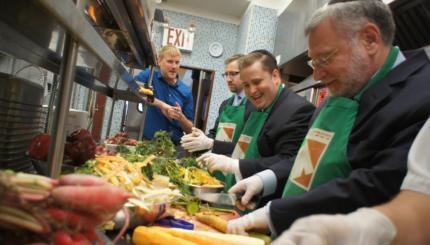Many of us love a good delicious piece of pie. It does not matter whether that pie is cherry, blueberry, chocolate chip or strawberry because there are very few taste sensations like a scrumptious piece of pie. Yet, our love of pie should not carry over to our community building and organizational framework. Because the thing with pie is that for every piece you consume there is one less piece left. This way of looking at community – if you have a piece then that is one less piece for me – is not only wrong but damaging.
All too often community leaders can see their city demographics as slices of a pie. The slice could be called “senior citizens” or the slice could be called “left-handed dark-haired
Democrats with three children and two pets,” regardless of the term, that grouping is seen as a limited quantity item that one either gets or does not get. The reality of the matter is that community members are more like human beings than they are like slices of a pie.
A person appreciates engagement. People respond when organizations and the individuals who run them are attentive to their needs and their desires. A community member desires to feel that they matter and what they bring to the table is critical. If one organization can provide that or if two organizations can provide that, the result is the same: engagement with the community and strengthening the bonds of affiliation and cohesion. There are times where a shopper will exclusively only rely on one company or one product to meet their needs. There are people out there who will only drink one type of soda and no other. However, for every one person that will never deviate from their brand loyalty, there are many more who will go where they find meaning, connection and where they are appreciated regardless if that means shopping at one store, two stores or even three.
When the various community organizations come to realize that they ought not to be expending so much energy, time and resources on aggressively competing but rather on making sure they are offering the best service they can possibly offer and that the needs of each person that comes through their door is being met to the fullest extent then we will have moved in a very positive direction away from seeing every individual as another slice of pie to be fought over. The added dimension to moving away from the pie model is that, from the perspective of the community member, a Jewish community that is collaborative, that is cooperative and that is friendly with each other, is one that makes all the various organizations more attractive and more desirable.
Let us leave pie to the dining room and out of the board room.



